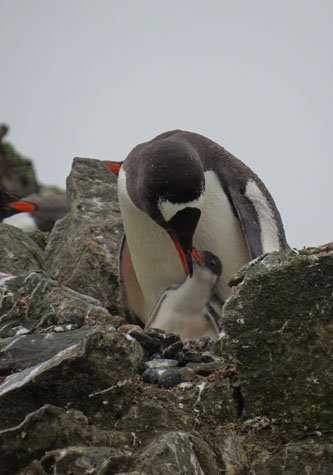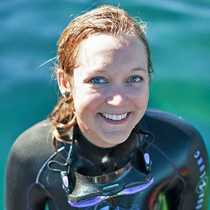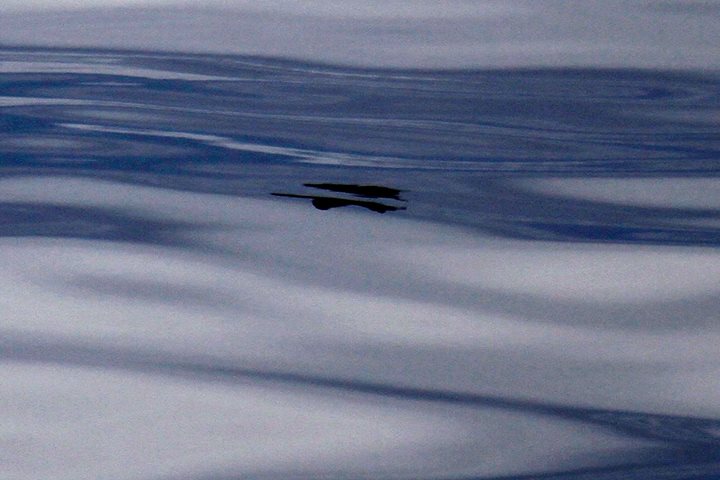After another choppy night on the Drake Passage, travelers aboard the National Geographic Orion arrived to breakfast a bit drowsy, but still excited for the adventures the new day would hold. At 8 a.m., the already familiar voice of our expedition leader, Doug, came over the intercom to inform us all that we had crossed 60 degrees south (technically entering us into Antarctica). Hooray, Antarctica!
As we continued to sail south, the rough seas eased up and the vibe aboard the ship became livelier. This morning’s largest task: decontaminating all outerwear. We were briefed on the importance of protecting this unique ecosystem and did our part by vacuuming and washing off all potential foreign living organisms from our boots, jackets, backpacks, hats, gloves, etc. Whew! What a chore, but well worth avoiding potential harm.
Rolling into afternoon, naturalist Marylou gave a lecture on Antarctic marine mammals and got everyone excited about the wildlife that can be seen throughout the duration of our expedition. The calmer seas offered a great opportunity for our photo enthusiasts to get out on deck and take photos of the light mantled sooty albatrosses that were circling the ship. Our photo team, accompanied by National Geographic photographer JD, offered valuable advice to guests about how to capture images of these beautiful seabirds.
Luckily, we picked up speed in the calm seas and were able to make our first Antarctic landing amongst the Aitcho Islands after dinner! As the zodiacs got closer to land, we could easily hear the squawking of penguins and smell their guano- what a lovely introduction! We all marveled at the abundance of both chinstrap and gentoo penguins that were nesting on this island. Though both of these species were nesting in the same environment, rocky and ice-free slopes, they didn’t intermingle much. In both species, males and females share responsibility of taking care of the chicks. During this excursion we were fortunate enough to see some of the adult penguins feeding their young chicks regurgitated krill. The chicks were adorable! We spent the next hour watching the courting and nesting behaviors of these species and even saw some skuas circling the colonies looking for a meal. Carefully avoiding penguin highways, we hiked to the other side of the small island where we saw our first land mammal - a southern elephant seal, the largest seal in the world! Though the individuals we saw were not fully grown, they still dwarfed the surrounding penguins. We all returned to the ship ready to enjoy a night of calm seas dreaming of penguins.






.jpg?width=106&height=85&mode=crop&scale=both&quality=50)


